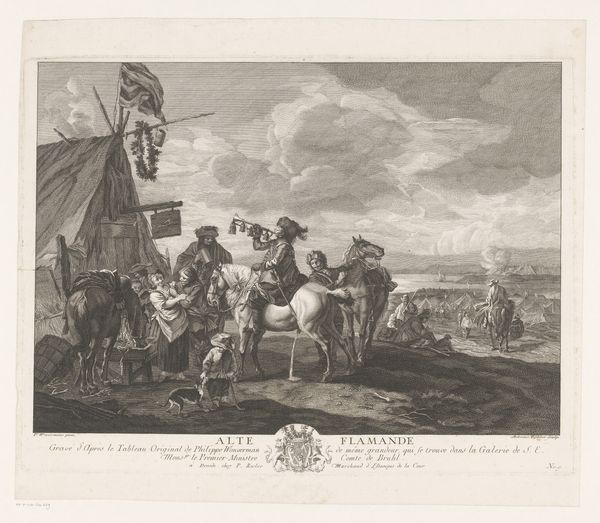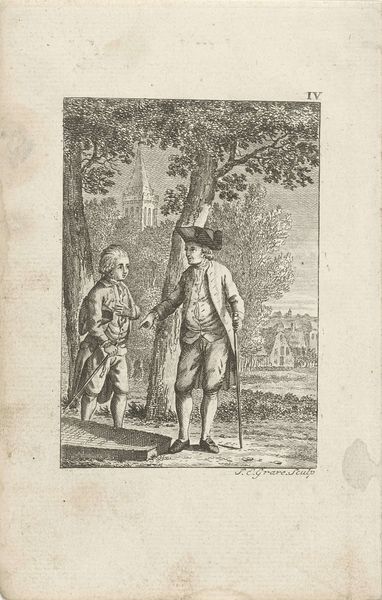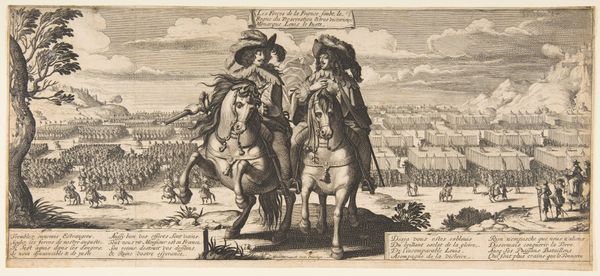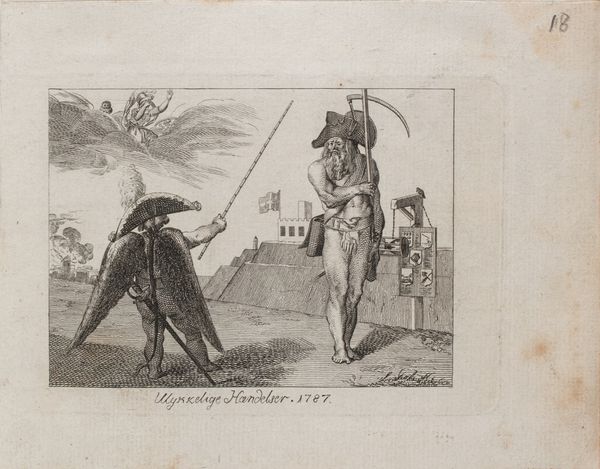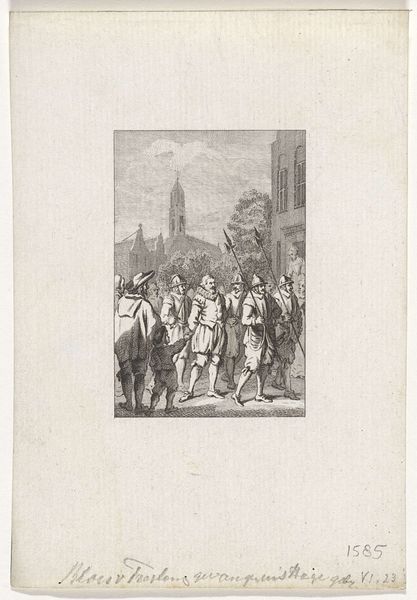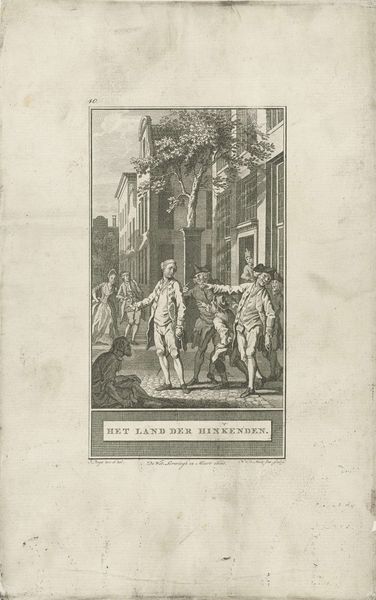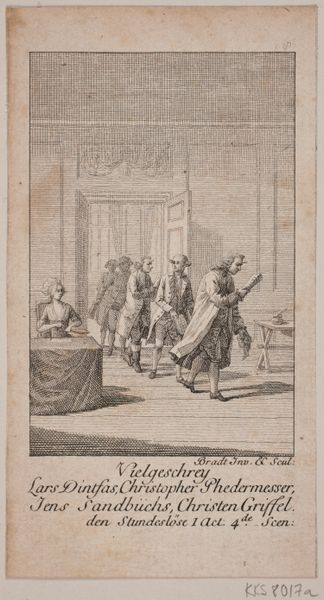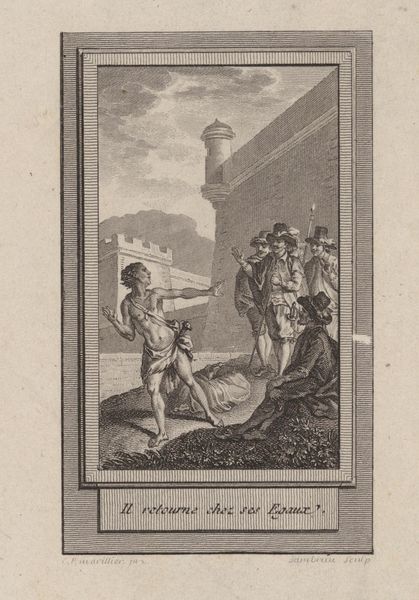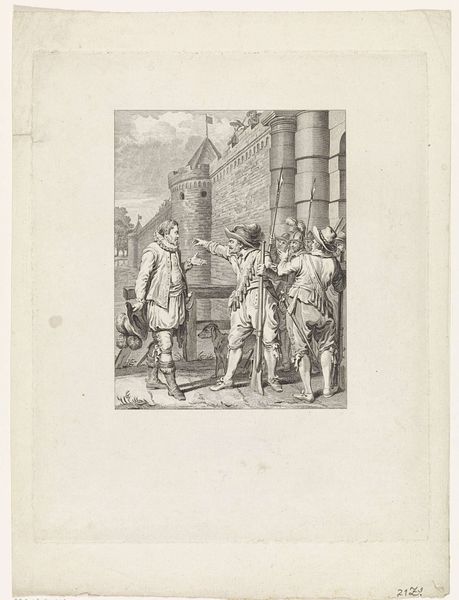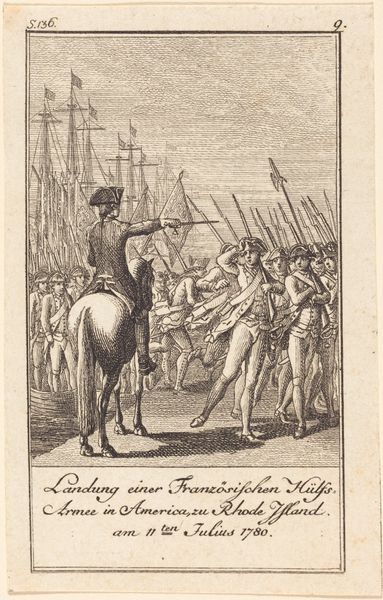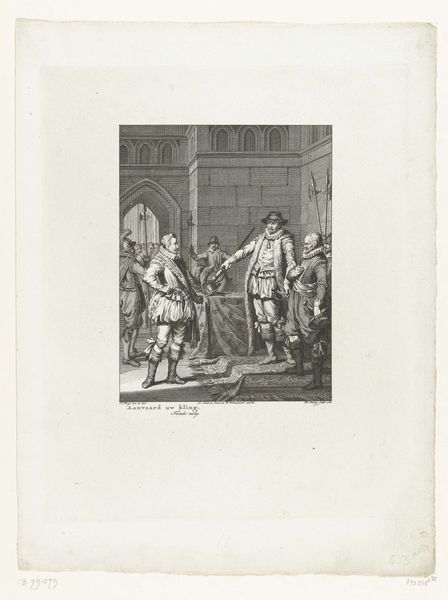
Dimensions: height 279 mm, width 208 mm
Copyright: Rijks Museum: Open Domain
Curator: The artwork before us is an engraving from around 1790 by Louis Michel Halbou, titled "Man standing before a woman in curass seated on a cannon." Editor: It's intriguing. There's a curious contrast in textures and form between the woman's smooth, flowing armour and the jagged lines of the man's coat and breeches, set against what looks like a rather meticulously drawn backdrop of sky. Curator: Yes, it’s interesting how Halbou is using this moment to depict shifts in power. The female figure, sitting atop a cannon in her war regalia, represents authority, literally enthroned by military strength, as the male figure extends a hand in what appears to be subservience or supplication. Editor: From a strictly formal viewpoint, note how the diagonals of the cannon, flag and wall all serve to frame the characters, focusing our attention to their interactions. Also note that her body mimics a cannon with that diagonal angle as well. Curator: Contextually, prints like these often circulated to disseminate political messages and create commentary on societal norms. Was this artwork advocating for shifting roles, maybe even with a bit of irony embedded? It's difficult to say. But we can assume, even looking at clothing of both individuals and objects surrounding them, that it's likely commenting on class. The cannon, being a device created for use for class and dominance, she appears calm while sitting above it. The male figure offers respect by not holding arms of any kind and showing he has no potential conflict. Editor: You’re absolutely right about the context adding weight. Without that lens, I see a compelling composition with sharply rendered figures occupying a stark, emotionally ambiguous space. I keep being drawn to the contrast between light and dark—notice the shadow cast onto the building on the left? It seems to indicate the darkness he might be leading to. Curator: So much is left for us to question when encountering such prints. It makes appreciating the print that much more impactful to remember that it serves not only to preserve that time period, but the class struggles that can last through many periods in time. Editor: Absolutely, it demonstrates how meticulous attention to detail can unlock deeper social narratives.
Comments
No comments
Be the first to comment and join the conversation on the ultimate creative platform.

